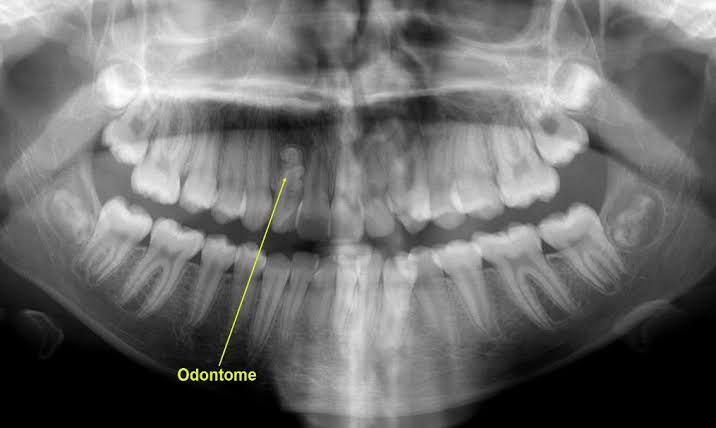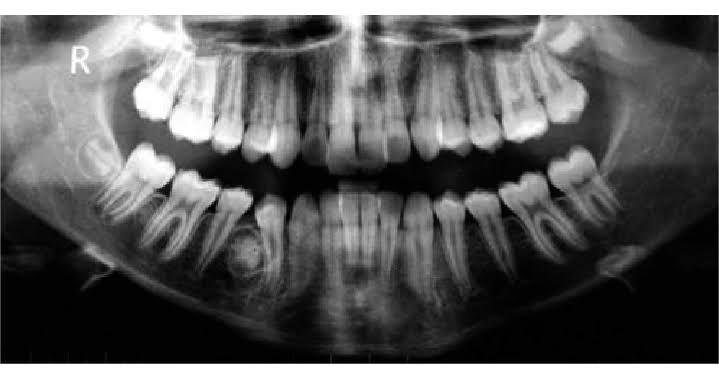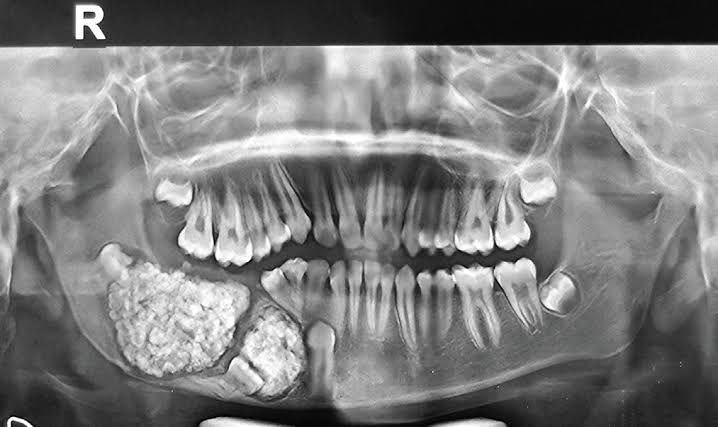Hi everyone, in this post we shall discuss about a tumor of dental tissues which is known as Odontoma otherwise called Odontome
An odontoma is benign tumour associated with tooth development. It is regarded as a dental hamartoma meaning dental tissues growing in an irregular manner or simply put abnormal structure of dental tissues.
Odontomas contain both odontogenic hard and soft tissues. Any interesting thing about odontoma is that just like normal tooth development, odontomas stop growing and proliferating once mature which makes them localized and benign in nature.
The average age of people usually affected by this benign abnormality is 14 years though it maybe more than that at time.
The condition is more frequently associated with impacted teeth in which one or more unerupted teeth is detected through failure of teeth to erupt at the usual expected time.
Although most cases are found impacted and covered within the jaw there are cases and scenarios where odontomas have erupted into the oral cavity.
Types of Odontoma
There are two main types of Odontomas which are compound and complex.
1- Compound Odontoma
Compound odontoma consists of the four major dental tissues which are enamel, dentine, cementum and pulp encaged in a fibrous connective tissue and surrounded by a fibrous capsule. It may appear as a lobulated structure where there is no definitive demarcation of separate tissues between the individual localized abnormally formed teeth. Compound odontomas are usually spotted in the anterior region of the maxilla and are less than 20mm diameter in dimension.
2- Complex Odontoma
As the implies, is an unrecognizable type as dental hard and soft tissues, usually appear as a radiopaque area on radiographs with varying densities indicating presence of enamel.
Unlike compound type which is usually spotted in the anterior maxilla, complex odontoma generally appears in the posterior mandible and can grow and proliferate to be several centimetres in size.
Dens Invaginatus when appears in an extreme and highly invaginated in morphology is known as dilated Odontoma which is an uncommon developmental alterations and changes that can appear in any region of the dental arches and can affect any dentition such as the deciduous, permanent and supernumerary teeth.
Dens invaginatus is a dental unusual development resulting from invagination of a section of the crown during tooth development making them seems to have inward displacement of crowns.
There are other two types of lesions which are also regarded as complex odontomas which have prominent soft tissue component resembling ameloblastic fibroma in structure and also have similar presentation and treatment outcomes to complex odontomas.
These odontomas were classified under complex type and as a developing odontomas because in terms of histological finding and assessment there are no differences.
They are as follows;
Ameloblastic fibrodentinoma contains only dentine along with the surrounding fibrous structures
Ameloblastic fibro-odontoma contains both enamel and dentine along with the fibrous dental structures.
That's all as regards this post. Clinical findings and treatment of Odontomas would be blogged on in the subsequent write-ups. Thanks for your attention as usual and happy reading.
Happy Blogging and Reading
Video from DentalManiaK YouTuber




Telegram and Whatsapp